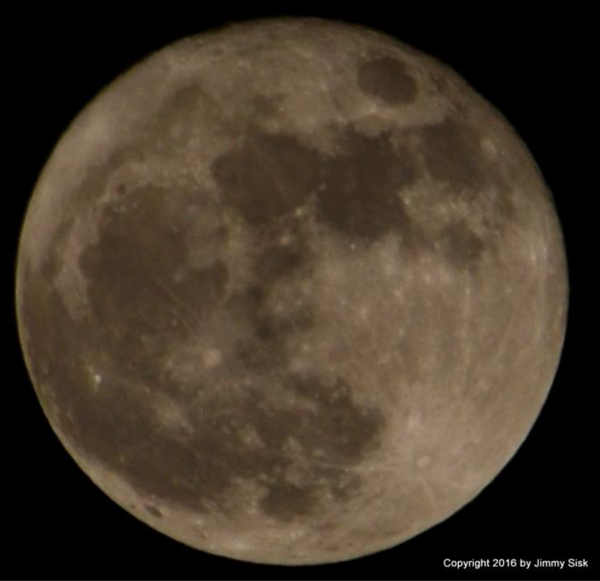
A repost from the St. Louis Post Dispatch - Writer Blaine Friedlander Special To The Washington Post - Photo of Moon by good friend and photographer Jimmy Sisk!
Turn Friday evening into a cosmic experience - a full moon, lunar eclipse and the chance to see a pale green comet as it streaks by Earth.
This month's so-called Snow Moon will pass through Earth's outer shadow Friday evening. As it is shaded from the sun's light, it will turn varying shades of gray. Lunar eclipses occur when the Earth is optimally placed between the sun and the moon. With an added dose of serendipity, we're on our planet's primo dark side with front-row seats.
The eclipse will be most easily viewed from the eastern portions of North and South America, after sunset February 10.
Around St. Louis, a shallow penumbral eclipse will have to contend with the glare of evening twilight. The moon will be in eclipse at moonrise (sunset) tonight and will hard to see in evening twilight.
The full moon climbs above the horizon about 4:30 p.m., just as it enters Earth's penumbral (outer) shadow and - ever so slowly - the lunar disk will start to dim and turn gray. Late afternoon twilight gives way to the evening dark skies. For practical purposes, the Central time zone will likely perceive the gray shading about 5:15 p.m., according to Alan MacRobert and Kelly Beatty, senior editors at Sky & Telescope magazine.
By the middle of the eclipse, around 6:44 p.m. Central time, the northern third of moon will be a noticeably darker gray, said astronomer Geoff Chester of the U.S. Naval Observatory.
After mid-eclipse, the graying begins to yield to the moon's normal brightness. The moon fully leaves the penumbral shadow at 8:55 p.m.
But wait - there's more!
Comet 45P/Honda-Mrkos-Pajdusáková makes its closest approach to Earth at 9:30 p.m. The greenish comet will be visible by telescope and binoculars, but not to the naked eye.
Of course you can still watch, because the folks at slooh.com will be webcasting the eclipse and the comet.
Slooh's live feed from various locations begins at 3:30 p.m. with the lunar eclipse. Experts will weigh in with a play-by-play around 5:30 p.m. during the eclipse maximum. Join astronomers Gerard Monteux and Bob Berman to learn about this seventh-magnitude (not visible with the naked eye) celestial object.
For both live shows, send photos of the eclipse and comet to @Slooh on Twitter for a chance to be featured during the webcast.
This eclipse is a little like deja vu. Yes, you've seen it before - eclipses are dictated by the Saros cycle, where 6,585.3 days slip in between eclipses, according to retired NASA eclipse expert, Fred Espenak. This eclipse series lasts 12 to 15 centuries.
This eclipse is Saros 114. It has been around since the year 971 and it will last until June 22, 2233 (at 22:22:33 Universal Time), according to NASA tables. The previous eclipse in this series occurred on Jan. 31, 1999, and before that, the eclipse occurred in the waning hours of Jimmy Carter's presidency on Jan. 20, 1981.
The next lunar eclipse in this series is Feb. 22, 2035 - George Washington's 303rd birthday.

